What's New
Displaying results 2961 - 2970 of 4052

Resource | Presentations,
Principles of the new funding model:
- Greater alignment with country schedules, context, and priorities
- Focus on countries with the highest disease burden and lowest ability to pay, while keeping the portfolio global
- Simplicity for both implementers and the Global Fund
- Predictability of process and financing levels
- Ability to elicit full expressions of demand and reward ambition
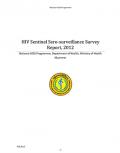
Resource | Publications,
The annual HIV Sentinel Sero‐surveillance survey, the systematic and regular collection of information on the occurrence, distribution and trends of HIV infection and factors associated with the infection, has been carried out since 1992. The survey has been conducted among 8 targeted sentinel groups:
- Pregnant Women attending the antenatal clinics (ANC)
- New Military Recruits
- Blood Donors
- Newly diagnosed TB patients
- People Who Inject Drugs (PWID)
- Men who have Sex with Men (MSM)
- Female Sex Workers (FSW)
- Male patients attending sexually transmitted infection (STI) clinic
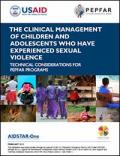
Resource | Guidelines,
These Technical Considerations aim to serve as a guide for primary health providers on the appropriate care of children and adolescents who have experienced sexual violence and exploitation based on current, evidence-based practices. They are expected to inform the efforts of PEPFAR implementers and other partners engaged in the clinical care of children as well as in HIV/AIDS prevention, care, and treatment to strengthen community-based responses to children who have experienced sexual violence and exploitation. They should be implemented in line with national guidelines in the provider’s country of practice.
This document is meant to be used by service providers in health care clinics, to include clinicians, behavioral scientists, social workers, pediatric care providers, child protection workers, HIV specialists, and child-focused clinical service providers. The focus is specifically on the clinical management of children who experience sexual violence and exploitation, but communities should also strive to develop comprehensive systems to respond to the needs and rights of these children.
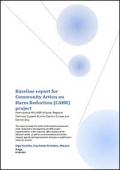
Resource | Publications,
The baseline study for CAHR project was implemented in a selection of sites across the five countries (China, Kenya, India, Indonesia and Malaysia) in order to obtain baseline data on a number of indicators that relate to drug injecting practices, risky injecting and sexual behaviour, interactions with the legal system, knowledge about HIV and safe injecting, access to and satisfaction with services, and quality of life of people who inject drugs (PWID). The study also attempted to determine certain associations between access to HIV-prevention services and risky injecting practices, as well as to identify contextual factors that might influence behaviours that put people at risk of HIV infection and quality of life of PWID.
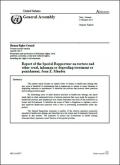
Resource | Publications,
The present report focuses on certain forms of abuses in health-care settings that may cross a threshold of mistreatment that is tantamount to torture or cruel, inhuman or degrading treatment or punishment. It identifies the policies that promote these practices and existing protection gaps.
By illustrating some of these abusive practices in health-care settings, the report sheds light on often undetected forms of abusive practices that occur under the auspices of health-care policies, and emphasizes how certain treatments run afoul of the prohibition on torture and ill-treatment. It identifies the scope of State's obligations to regulate, control and supervise health-care practices with a view to preventing mistreatment under any pretext.
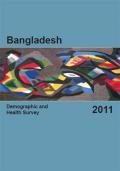
Resource | Publications,
This report summarizes the findings of 2011 Bangladesh Demographic and Health Surveys (BDHS) conducted under the authority of the National Institute of Population Research and Training (NIPORT) of the Ministry of Health and Family Welfare and implemented by Mitra and Associates of Dhaka. ICF International provided financial and technical assistance for the survey through USAID/Bangladesh. The BDHS is part of the worldwide Demographic and Health Surveys program, which is designed to collect data on fertility, family planning, and maternal and child health.
The preliminary results of the 2011 BDHS, with its key indicators, were released through a dissemination seminar in April 2012. This final report brings more comprehensive analysis of the survey results. Along with the key results, detailed findings and possible interpretations are presented.
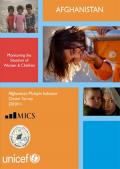
Resource | Publications,
The findings of the Afghanistan: Multiple Indicator Cluster Survey (AMICS) reveal the story of a country in transition, where many significant improvements have occurred in the last decade, as Afghanistan emerged from decades of war, poor governance, and widespread human rights abuses. Many Afghans have improved access to drinking water, school attendance is up for both boys and girls, and child mortality is relatively down, if still unacceptably high when compared with global estimates. Yet, progress has come more slowly in many areas, such as women s literacy, and Afghanistan faces new threats on the horizon, such as HIV/AIDS.
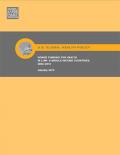
Resource | Publications,
Trends between 2002 and 2010 provide an indication of donor priorities and important shifts. For instance, the U.S. remained the largest donor to health in each year over the period and provided the greatest share of its ODA for health. Additionally, the donor mix has shifted over time, in part due to the entrance of new donors, particularly the Global Fund, which was created in 2002 and has been the second largest donor since 2006. The U.S. and the Global Fund combined accounted for more than half of total donor funding for health in 2010.
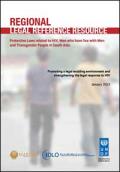
Resource | Publications,
This Regional Legal Reference Resource - Protective Laws related to HIV, MSM and Transgender People in South Asia (Reference Resource) is an output of the South Asian Roundtable on Legal and Policy Barriers to HIV held in Kathmandu in November 2011 (South Asian Roundtable).
This Reference Resource documents key protective laws focused on HIV, men who have sex with men (MSM) and transgender people in five countries in South Asia. The two primary objectives of the Reference Resource are to:
1. build the capacity of legal professionals to analyze protective laws (focusing on people living with HIV, MSM and transgender people); and
2. develop a resource to support legislative drafting, law reform and advocacy initiatives.

Resource | Publications,
In the Asia region, an increasing number of HIV infections occur among men who have sex with men (MSM) and transgender people. Unless effective HIV prevention strategies are implemented, the Commission on AIDS in Asia's regional projections predict that about half (46%) of all new HIV infections in Asia will soon be among MSM, an increase of 13% from 2008. While inadequate HIV data exists on transgender women due to their limited inclusion in national HIV surveillance systems, studies that do exist show transgender women are at disproportionate risk for HIV infection.
Young MSM and transgender people in Asia Pacific are at high risk for HIV. Like their older peers who are MSM and/or transgender, these young people face additional barriers to services due to the criminalization of male-to-male sex in 19 out of 38 countries in the Asia-Pacific region, and the intense stigma experienced from family, employers, service-providers and the state (among others).





